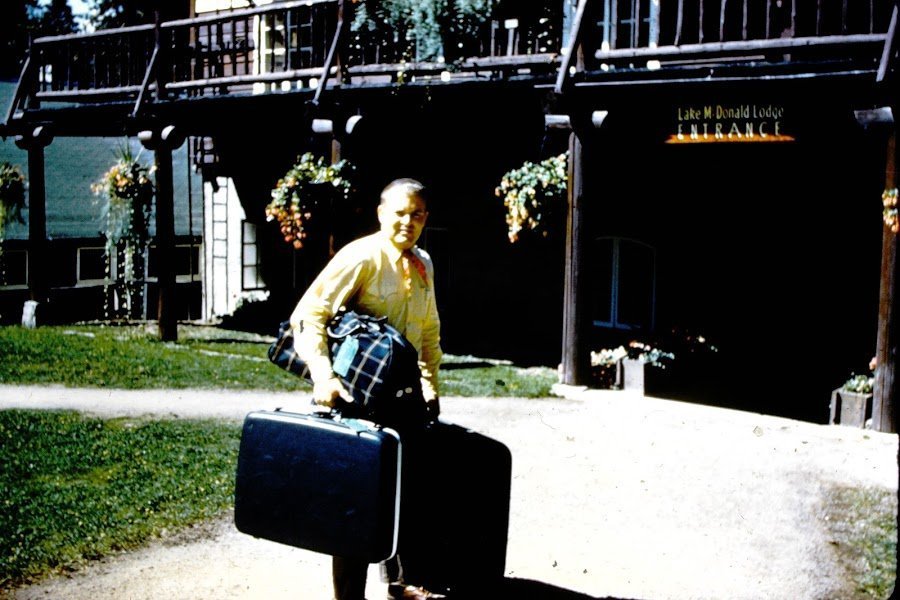Glacier National Park in Montana is a treasure trove of natural wonders, rich history, and diverse wildlife. From its stunning glacial landscapes to its unique ecosystem, this park offers visitors an unforgettable experience. Established in 1910, it’s home to over 1 million acres of pristine wilderness, 26 glaciers, and a wealth of plant and animal species. Let’s explore some fascinating facts about this crown jewel of the American national park system.
What Makes Glacier National Park Unique?

Glacier National Park stands out for several reasons:
- Crown of the Continent: The park’s nickname reflects its position at the headwaters of streams that flow to the Pacific Ocean, Gulf of Mexico, and Hudson Bay.
- International Peace Park: It forms part of the Waterton-Glacier International Peace Park, a UNESCO World Heritage Site.
- Dark Sky Park: Recognized for its exceptional stargazing opportunities.
- Going-to-the-Sun Road: A 53-mile scenic drive that’s an engineering marvel.
- Diverse Ecosystems: From prairie to tundra, the park encompasses various habitats.
How Old is Glacier National Park?

Glacier National Park has a rich history:
- Established: 1910
- Native American Presence: Over 10,000 years
- Geological Age: Rock formations date back 1.5 billion years
The park’s history is as diverse as its landscape, with Native American tribes like the Blackfeet, Salish, Kootenai, and Pend d’Oreille having deep connections to this land.
What Wildlife Can You Find in Glacier National Park?
Glacier National Park is a haven for wildlife enthusiasts. Here’s a glimpse of the park’s biodiversity:
| Category | Number of Species |
|---|---|
| Mammals | 71 |
| Birds | 276 |
| Fish | Various species |
| Insects | Numerous |
Notable species include:
- Grizzly and Black Bears
- Mountain Goats (park symbol)
- Bighorn Sheep
- Moose
- Canada Lynx
- Harlequin Ducks
- Pikas
How Many Glaciers Are in Glacier National Park?
The glaciers in the park have a fascinating story:
- Current Number: 26 glaciers
- Historical Number: 150 glaciers in 1850
- Largest Glacier: Harrison Glacier
Unfortunately, due to climate change, these glaciers are rapidly shrinking. Scientists predict that if current climate patterns continue, the glaciers may disappear entirely by 2030.
What Are the Most Impressive Geological Features?
Glacier National Park’s geology is awe-inspiring:
- Mountains: 175 named mountains, with Mt. Cleveland being the highest at 10,448 feet.
- Lakes: 762 lakes, including Lake McDonald (9.4 miles long and 464 feet deep).
- Continental Divide: Runs through the park, with Logan Pass at 6,646 feet.
- Glacial Valleys: U-shaped valleys carved by ancient glaciers.
- Waterfalls: Numerous cascades, including the 492-foot Bird Woman Falls.
How Many People Visit Glacier National Park Annually?
Visitor statistics for Glacier National Park are impressive:
- Annual Visitors: Approximately 3 million
- Peak Season: Spring and Summer
- Visitor Demographics: Diverse, including families, hikers, and international tourists
The park’s popularity has grown over the years, attracting nature lovers from around the world.
What Unique Transportation Options Are Available in the Park?
Glacier National Park offers some distinctive transportation experiences:
- Red ‘Jammer’ Buses: Historic buses used for tours since the 1930s.
- Going-to-the-Sun Road: A 53-mile scenic drive crossing the Continental Divide.
- Boat Tours: Available on several of the park’s larger lakes.
- Horseback Riding: Guided trips through backcountry trails.
How Does Glacier National Park Contribute to Conservation?
Glacier National Park plays a crucial role in conservation:
- Ecosystem Preservation: Protects diverse habitats from prairie to alpine tundra.
- Wildlife Corridor: Provides essential habitat for numerous species, including endangered ones.
- Climate Change Research: Serves as a living laboratory for studying the effects of global warming.
- Water Resource: Headwaters for streams flowing to three different oceans.
What Are Some Lesser-Known Facts About Glacier National Park?
Here are some intriguing lesser-known facts:
- The park has over 700 miles of hiking trails.
- It’s home to over 1,000 species of plants.
- The oldest rocks in the park are nearly 1.5 billion years old.
- The park experiences microclimates, with significant temperature variations over short distances.
- It’s one of the few places in the lower 48 states where grizzly bears still roam in the wild.
Glacier National Park in Montana is not just a place of scenic beauty; it’s a testament to the raw power of nature, the delicate balance of ecosystems, and the urgent need for conservation. From its towering peaks to its hidden valleys, every corner of this park tells a story of geological wonder and biological diversity. As we continue to learn and share fun facts about Glacier National Park in Montana, we’re reminded of the importance of preserving these natural treasures for future generations.
References:
1. https://glacier.org/wildlife-in-glacier-national-park/
2. https://www.undercanvas.com/17-interesting-facts-about-glacier-national-park/
3. https://montanadiscovered.com/glacier-national-park-facts/